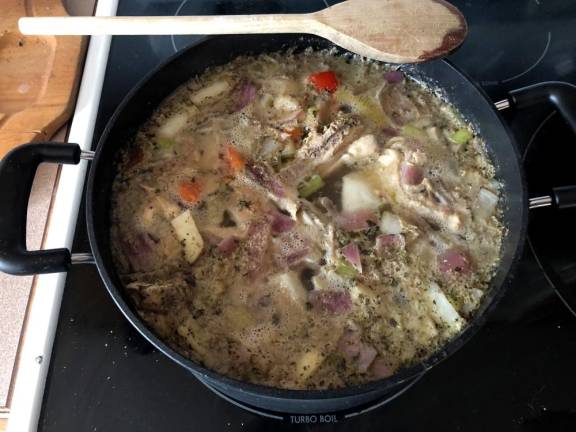Eating Safe in COVID Season
What you need to know about the virus and food

Vitamin C didn’t cure the common cold. It won’t lay a finger on COVID-19 either. Ditto for the Keto diet, Weight Watchers, South Beach, Atkins and every nutritionist’s favorite, the Mediterranean diet. As for special foods, yes, garlic has some antibacterial properties but it’s a wimp when it comes to viruses.
That’s the bad news. Here’s the good news. As Rutgers University food science expert Donald Schaffner told one curious reporter, there’s no evidence that the disease is transmitted by food, which means you can eat whatever pleases your palate - although the best diet is always one that’s (boring word) balanced.
As you choose your menu, you will be pleased to know that while the bacteria such as Salmonella which are linked to foodborne disease do multiply on food, viruses don’t. Why? North Carolina State University food safety expert Benjamin Chapman explains that viruses have to invade and work inside living cells to produce the new particles that cause the symptoms associated with a viral disease.
But there are links between COVID-19 and food. Start with that fresh apple sitting on your kitchen counter. If an infected person sneezed or coughed on it the virus might be sitting there on the peel waiting for you. However, COVID-19 is an “enveloped virus” with an oily outer membrane easily disrupted by plain soap and then rinsed away with ordinary tap water. Some experts even say it’s okay to skip the soap which might upset your tummy, and settle for scrubbing with a veggie brush and plain running water. Caveat emptor: Wash the brush afterward.
Effective Cooking Temps
COVID-19 is also done in by heat. Not the kind you get from sunlight. The kind you get when you turn on your stove. The evidence comes from a 2003 World Health Organization study in which a coalition of Chinese, Japanese and German researchers found that after a scant three minutes at 149 degrees, the number of SARS coronaviruses on a surface dropped from 10,000 to a single particle. There are currently no similar studies with the COVID-19 virus, but the assumption is that cooking your food to the same temperatures required to kill other bad bugs is likely to wipe out COVID-19. The effective temps are 145° F for fresh pork, beef, and fish; 160° F for egg dishes; 165° F for poultry, ground beef, casseroles, and leftovers, as well as reheated precooked ham.
What about the food packages, ranging from the potato chips bag to the milk carton? This March, a preliminary study by the National Institute of Allergy and Infectious Diseases, Princeton, UCLA and the CDC showed that COVID-19 viruses might stay alive as long as 72 hours on stainless steel on plastic. Cardboard? Three hours. But James E. Rogers, Consumer Reports’ director of food safety research and testing, has said that “just because the virus is there, doesn’t mean that there are enough viable particles there to infect you.” True. But why not eliminate the worry by simply wiping down glass jars, metal cans, plastic tubs, and the like. After which you wash your hands, of course and simply transfer the food to a new, clean container.
With the food safely stored, it’s time to deal with another COVID-19 risk. You’re stuck at home all day. You’re bored. You eat. And when you step on the scale, the result is right there in front of your eyes. To avoid the shock, as you head to the fridge for the 15th time today, stop, think, consider whether eating from boredom is healthful, and maybe just rearrange all the kitchen cabinets instead.
Which doesn’t mean avoiding comfort food altogether. On March 3, 1976, when the FDA committee on over-the-counter cold remedies submitted its report, it said that chicken soup was “as good as any of them” in relieving the symptoms of a cold. Since then, several more effective OTC meds have come on scene to lighten the sniffles, but none to actually cure the cold. Or COVID. Nonetheless, few things are more soul soothing than warm and salty chicken soup. Enjoy.
Carol Ann Rinzler is the author of more than 20 books on health, including "Nutrition for Dummies."